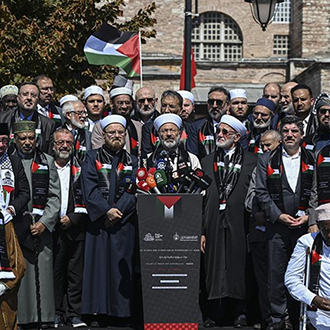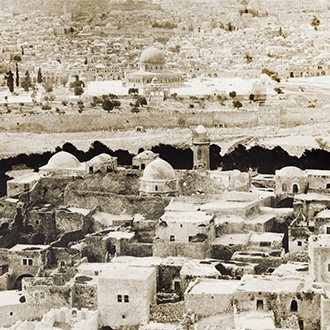It is performed in the state of one ihram by making niyyah for umrah and hajj both at the same time in the same hajj season of the same year. A person who wants to perform hajj al-qiran enters ihram by intending for umrah and hajj both at the same time when or before he arrives at the place of Miqad. After performing the umrah, he performs hajj with the same ihram without ending it, and after the completion of the rites of hajj, he ends the ihram. For those who perform hajj al-qiran, qurbani (offering a sacrifice) for gratitude is wajib (Marghinani, al-Hidayah, II, 369 ff.; Mawsili al-Ikhtiyar, I, 498).
What does hajj al-ifrad mean, and how is it performed?
Hajj al-ifrad is the one performed without umrah in the same year’s hajj season. A person who wants to perform hajj al-ifrad enters the state of ihram in his current location if he is in Mecca or one of the places of miqad, if he comes from somewhere outside the limits of miqad, by making an intention for hajj only. When he arrives at Mecca, he performs tawaf al-qudum and remains in the state of ihram. He goes to the Plain of Arafat and Muzdalifah on the eve of Eid al-Adha, and then stones Jamrat al-Aqabah on the Eid al-Adha, and then ends ihram by having a haircut. Later he performs tawaf al-ziyarah and sa’y and stones the Jamarat. Offering a qurbani is not required for hajj al-ifrad (Marghinani, al-Hidayah, II, 322 ff.).
What does hajj al-tamattu mean, and how is it performed?
Hajj al-tamattu is performed by first performing umrah and ending ihram, and then entering ihram for hajj again in the same year’s hajj season. A person who wants to perform hajj al-tamattu enters ihram by making intention for umrah in the place of miqad or before arriving at the place of miqad, and performs umrah after arriving at Mecca. Then he ends the state of ihram by having a haircut. Thus, the umrah becomes completed. Then he enters the state of ihram for hajj one day before the Day of Arafah (Eve of Eid al-Adha). He ends ihram after performing hajj. Offering qurbani is wajib for those who perform hajj al-tamattu (Marghinani, alHidayah, II, 380)
What are the months of hajj?









